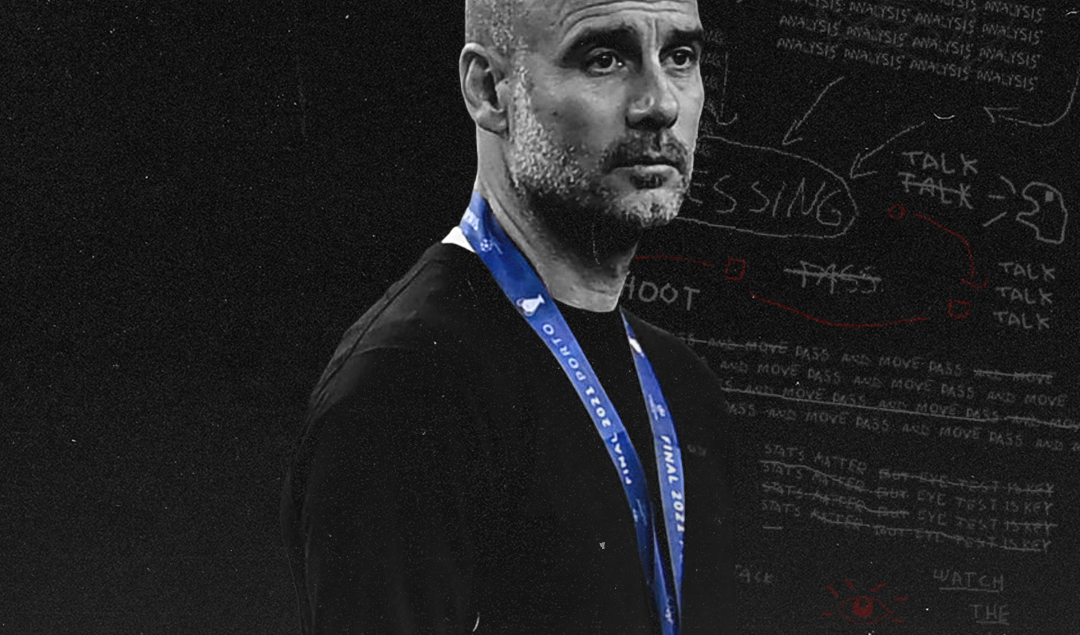Pep Guardiola’s Premier League Triumph: Mastering the 3-2-4-1 Formation
Pep Guardiola’s tactical innovation and strategic prowess have long been recognised in the footballing world. In a remarkable Premier League campaign, the Spanish manager defied convention by successfully implementing the 3-2-4-1 formation. This article delves into the intricacies of Guardiola’s tactical approach, highlighting how the formation enabled Manchester City to secure the coveted Premier League title.
Formation Overview
The 3-2-4-1 formation, also known as the “Christmas Tree” formation, is characterised by three central defenders, a double pivot in midfield, four attacking midfielders, and a lone striker. This shape allows for fluid movement, versatility, and effective ball circulation. Pep was already onto a winning formula for the Premier League, but he never stops innovating. His genius saw them topple a mighty Arsenal, winning the league by eight points in the end.
Inevitably, they’re in a prime position to do it all over again next year. If you check any football betting site, you’ll see City are comfortable favourites at 8/15, with the next closest being Newcastle at 15/2. Guardiola’s adaptation of this formation provided his team with a solid defensive foundation, numerical superiority in midfield, and ample attacking options, leading to a well-balanced and dynamic playing style.
Defensive Stability
Guardiola’s decision to employ three central defenders in the 3-2-4-1 formation bolstered Manchester City’s defensive solidity. The additional centre-back provided increased coverage, allowing for effective man-marking and reducing the vulnerability to counter-attacks. Having a centre-back like Manuel Akanji or Nathan Aké competing with a winger like Mohammed Salah works better in a one-on-one battle than an attacking full-back like Cancelo.
His use of John Stones in one of the midfield pivots was absolute genius. He offered defensive stability but had the footballing ability to command the middle in the box midfield. This defensive stability laid the foundation for City’s success, as they conceded fewer goals and maintained control over matches, frustrating opponents and minimising scoring opportunities.
Midfield Control and Creativity
The double pivot in midfield formed by two central midfielders in the 3-2-4-1 formation offered a strong platform for controlling the flow of the game. Rodri and Stones are both equally defensively strong as they are creative with the ball at their feet.
With a numerical advantage in their box-midfield, Manchester City excelled at dictating the tempo, dominating possession, and launching precise attacks. The midfield duo displayed exceptional positional awareness, defensive discipline, and effective distribution of the ball.
This control allowed City’s creative attacking midfielders to exploit spaces, create goal-scoring opportunities, and showcase their vision, technique, and playmaking abilities.
Versatile Attacking Options
Guardiola’s use of four attacking midfielders in the 3-2-4-1 formation provided Manchester City with a multitude of versatile and interchangeable options in the final third. Non-traditional wide players, like Jack Grealish or Bernardo Silva, possess the freedom to cut inside and combine with the central attacking midfielder or make diagonal runs, causing confusion in opposition defences. This fluidity and interchangeability of positions led to an array of attacking combinations and made City’s forward line unpredictable and difficult to defend against.
Tactical Adaptability and Flexibility
Guardiola’s implementation of the 3-2-4-1 formation showcased his tactical adaptability and flexibility. While the formation provided a solid foundation, City demonstrated the ability to seamlessly transition into different shapes depending on the flow of the game. They create numerical superiority in areas all over the pitch. They all could interchange positions, confusing opposition defenders and creating mismatches. This tactical versatility allowed City to adapt to various scenarios, exploit opponents’ weaknesses, and maintain control of matches throughout the season.
Pep Guardiola’s masterful utilisation of the 3-2-4-1 formation propelled Manchester City to Premier League glory. The defensive stability, midfield control, creative attacking options, and tactical adaptability offered by the formation were key factors in City’s success, showcasing Guardiola’s tactical brilliance and cementing his legacy as one of the game’s greatest managers.
Guardiola’s tactical arrangement not only demonstrates his profound understanding of football tactics but also reflects his spirit of daring to innovate and breakthrough.
To commemorate the outstanding achievements of Guardiola and his team, special medals can be customized. The customized medal can be designed with Manchester City’s team emblem on the front, coupled with the words “championship” to symbolize the team’s identity and honor, and Guardiola’s portrait on the back to commend his outstanding contribution to the team.
Custom medals are not only a symbol of honor, but also a spiritual inheritance. It will witness Manchester City’s team under Guardiola’s leadership, moving towards a more glorious future.

